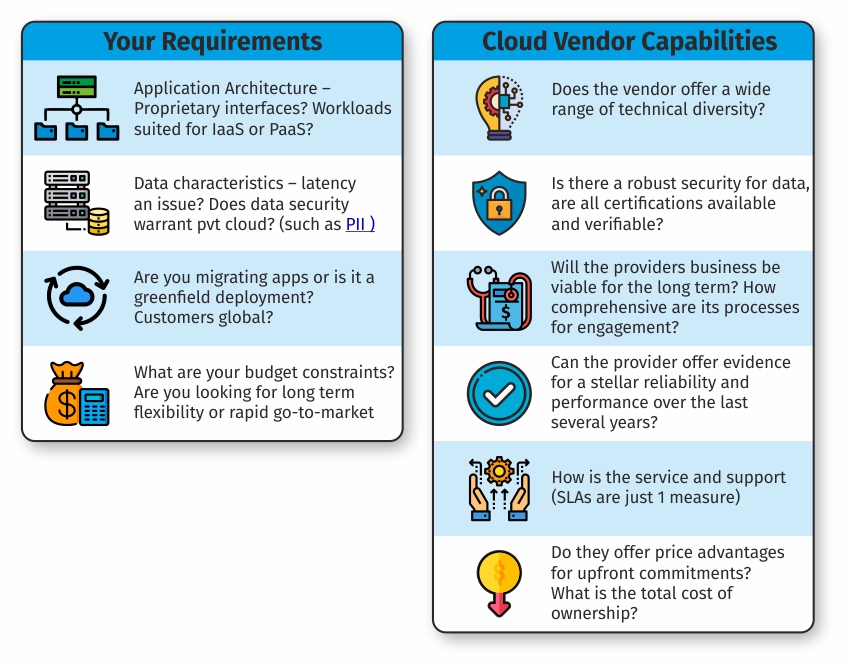The advent of cloud services has been a catalyst for organisations to optimise their IT spends towards business needs over related infrastructure costs. Aligning to worldwide trends over the last several years, enterprises have increasingly become more inclined to migrate their essential data and computing workloads to the cloud, while also becoming comfortable and assured in executing this as a strategic decision for scaling their businesses.
Cloud services are way matured now than a decade ago, when it was considered as an emerging technology. Gartner reports cloud revenue at USD$227.8 billion at the end of 2019 and projects a growth to USD$266.4 billion in 2020, and USD$354.6 billion by 2022.
| How to buy and use TallyPrime on a cloud service? |
As a technology leader with a mandate to make decisions on how to take key IT business needs to the cloud, you may be spoilt for choice today, as more providers jostle for attention in the increasingly crowded space of cloud computing. It is therefore of paramount importance to make a well- informed decision, by effectively de-cluttering key attributes such as availability, scalability, security & cost, from an ever-growing expanse of features that may turn out to be often irrelevant to business needs. Here are some of the key factors that an organization should evaluate and consider while moving to cloud services:
Selecting the right cloud variant:
Cloud providers can either offer Private Cloud- a service that isn’t shared with other organisations, typically own hardware hosted in racks in a shared co-location facility or Public Cloud services- customer applications and data on shared infrastructure but secure from each other. Public cloud services today have come a long way in ensuring ease of usage, security compliance and cost competitiveness; however, data and application security demands may require maintaining own infrastructure in private cloud facilities.
Analysing the requirement of cloud-based on the business requirement
The business would be better off, even ahead of choosing the cloud vendor, to characterise & prioritise business application and data needs and cross-check them against what cloud vendors typically offer. Here is a ready reckoner:

Choosing an effective cloud service provider
There are three leading public cloud provider space (Amazon Web Services, Microsoft Azure and Google Cloud Platform) and all of them have strong presence in India and offers sizeable number of services under IaaS, PaaS and SaaS that can accommodate enterprises’ compute, storage & networking needs. Additionally, India is also home to multiple other brands offering their services, which are Tier II and Tier III players (Oracle, IBM, Netmagic et al).
Key Considerations
After scrutinising the business requirements carefully, it may be a good idea to examine the following aspects with additional emphasis:
Data Security
It is imperative to ensure that the provider meets all pertinent security standards and compliant with the certifications that matter to the business needs (e.g. ISO 27001, PCI-DSS etc.). If data localisation is important, ensure that the provider has ability to store all data in the same geo region as the end customer. For setting up secure computing, AWS is usually the best place to start, but offers complexity (many services, some overlapping), while Azure and GCP have caught up (offers more granular security control through portals).
Total Cost of Ownership (TCO)
Calculating costs in the cloud can be a daunting proposition. Every vendor offers many diverse discounting strategies (some based on yearly commitments) for compute and storage, as well as overall pricing. Indian providers are extremely competitive and would do well to negotiate deeply and well, thereby driving a hard bargain.
Partnerships & Integrations
Cloud providers often have a network of partners (system integrators, support services, marketplace vendors) who can offer a differentiated service as part of an ecosystem, which can ease migration, deployment and running the cloud service. It is essential to check on which relevant integrations can make a difference to the end customers.
Final Analysis
It can be easy to get carried away by the brand and hype around service diversity of a cloud provider, but the key is to always assess what the business needs, not go after the most shining new technology that may not be the best fit for the application needs. After the evaluation and screening, create a final scorecard with points (say scale of 1 to 10) mapped to each aspect (while collecting inputs from multiple stakeholders), such as:
- Features as per business need
- Application integration needs if any
- What is the estimated budget for a cloud solution?
- Future expansion or reduction of the features?
- Level of expertise of the IT/Ops department?
Lastly, considering a multi cloud strategy for longer term viability of business is also imperative.
With the multi-pronged benefits of having cloud services for the business, the market for cloud is growing rapidly as well as more innovative solutions are emerging to cater to the increasing demand that can help in driving business excellence
Read more:
- TallyPrime, on a cloud service
- Now remotely access your TallyPrime license and data
- 7 Benefits of Using Cloud Accounting in your Business
- 5 Important Questions to Ask While Choosing a Cloud Accounting Solution for Your Small Business
- Cloud Migration Risks & Benefits
- A Comprehensive Guide to Cloud Accounting











